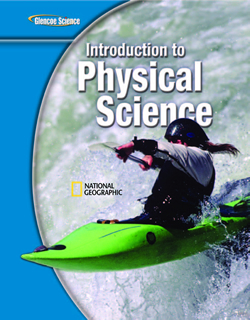1 A) You can calculate exactly where a satellite will be at any time. An electron's position must be estimated. B) Satellites have a larger negative charge than electrons. C) Satellites have positive electrical charges. Electrons have negative charges. D) You can calculate exactly where an electron will be at any time. A satellite's position must be estimated. 2 A) 18 B) 1 C) 35 D) 17 3 A) molecule B) isotope C) ion D) compound 4 A) They are all metalloids. B) Their outer energy levels are complete. C) They are all nonmetals. D) They include the noble gases. 5 A) double bonds B) unbalanced charges C) covalent bonds D) triple bonds 6 A) sodium and phosphorus B) sodium and carbon C) potassium and nitrogen D) potassium and iodine 7 A) negative metal ions, positive metalloid ions B) negative metal ions, positive nonmetal ion C) positive metal ion, noble gases D) positive metal ions, negative nonmetal ions 8 A) They are all nonmetals. B) They are all Group I elements. C) They all have two electrons in their outer energy levels. D) They are all metalloids. 9 A) highest B) negative C) lowest D) middle 10 A) They have three electrons in their outer energy levels. B) They are metalloids. C) They have the same number of neutrons in their nuclei. D) They are metals. 11 A) compound B) molecule C) ion D) solution 12 A) farther, more tightly bound B) farther, more C) closer, more D) farther, fewer 13 A) 6 B) 4 C) 12 D) 8 14 A) electron dot diagram B) chemical formula C) chemical symbol D) chemical equation 15 A) the electron orbits B) the electron cloud C) its nucleus D) its outer energy shell 16 A) ionic bond B) electrical bond C) salt D) covalent bond 17 A) isotope B) ion C) chemical compound D) chemical bond 18 A) nitrogen molecules B) water molecules C) magnesium chloride D) sodium fluoride 19 A) unequal sharing of electrons B) ionic bonds C) equal sharing of electrons D) covalent bonds 20 A) subscript B) chemical equation C) chemical formula D) superscript














